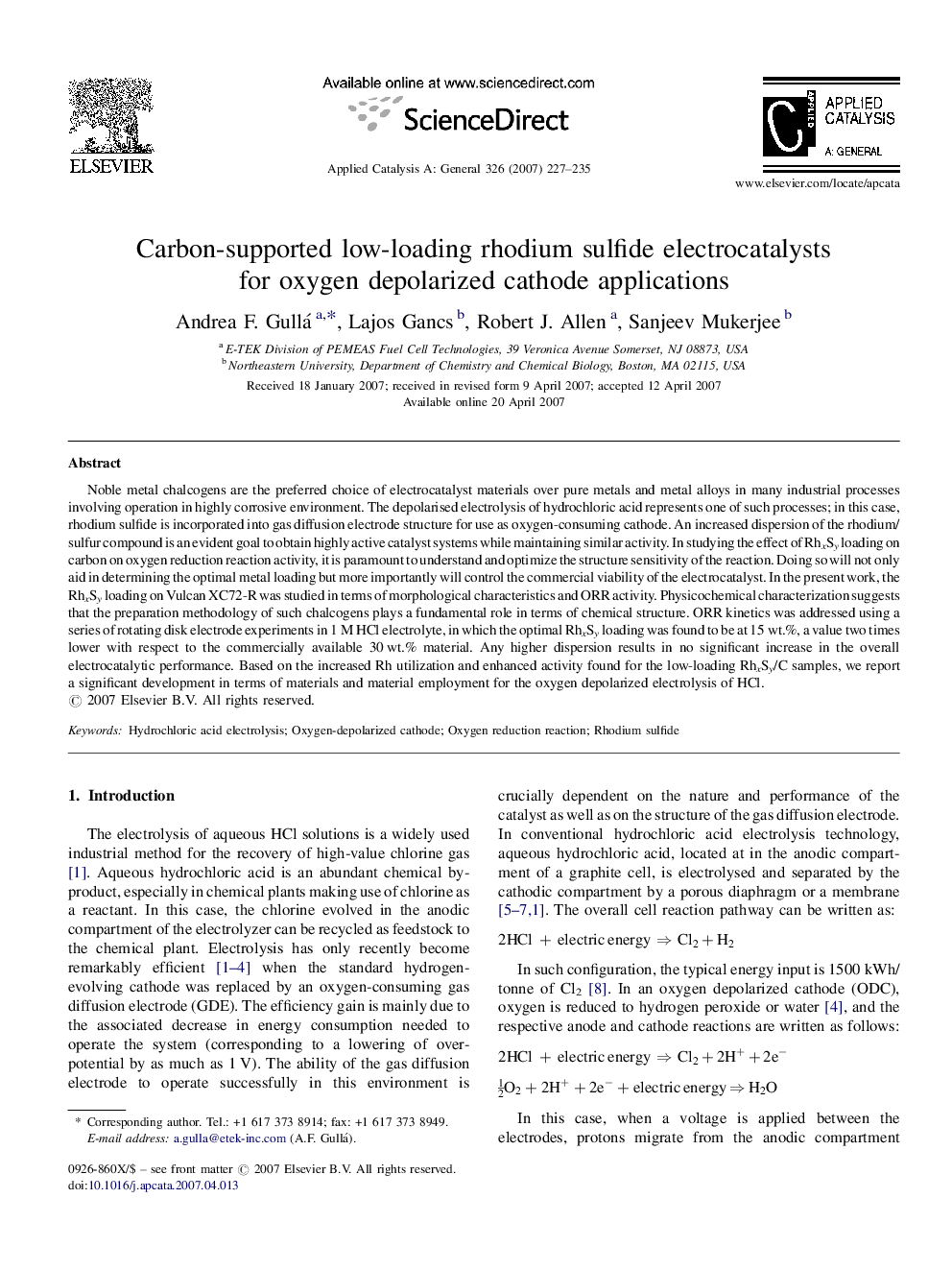| Article ID | Journal | Published Year | Pages | File Type |
|---|---|---|---|---|
| 43533 | Applied Catalysis A: General | 2007 | 9 Pages |
Noble metal chalcogens are the preferred choice of electrocatalyst materials over pure metals and metal alloys in many industrial processes involving operation in highly corrosive environment. The depolarised electrolysis of hydrochloric acid represents one of such processes; in this case, rhodium sulfide is incorporated into gas diffusion electrode structure for use as oxygen-consuming cathode. An increased dispersion of the rhodium/sulfur compound is an evident goal to obtain highly active catalyst systems while maintaining similar activity. In studying the effect of RhxSy loading on carbon on oxygen reduction reaction activity, it is paramount to understand and optimize the structure sensitivity of the reaction. Doing so will not only aid in determining the optimal metal loading but more importantly will control the commercial viability of the electrocatalyst. In the present work, the RhxSy loading on Vulcan XC72-R was studied in terms of morphological characteristics and ORR activity. Physicochemical characterization suggests that the preparation methodology of such chalcogens plays a fundamental role in terms of chemical structure. ORR kinetics was addressed using a series of rotating disk electrode experiments in 1 M HCl electrolyte, in which the optimal RhxSy loading was found to be at 15 wt.%, a value two times lower with respect to the commercially available 30 wt.% material. Any higher dispersion results in no significant increase in the overall electrocatalytic performance. Based on the increased Rh utilization and enhanced activity found for the low-loading RhxSy/C samples, we report a significant development in terms of materials and material employment for the oxygen depolarized electrolysis of HCl.
Graphical abstractThe loading of RhxSy on Vulcan was studied in terms of morphological characteristics and ORR activity for the depolarised electrolysis of hydrochloric acid. Optimal RhxSy loading was found to be at 15 wt.%, two times lower than the commercially available material. We report a significant development in terms of materials and material employment for the oxygen depolarized electrolysis of HCl.Figure optionsDownload full-size imageDownload as PowerPoint slide
